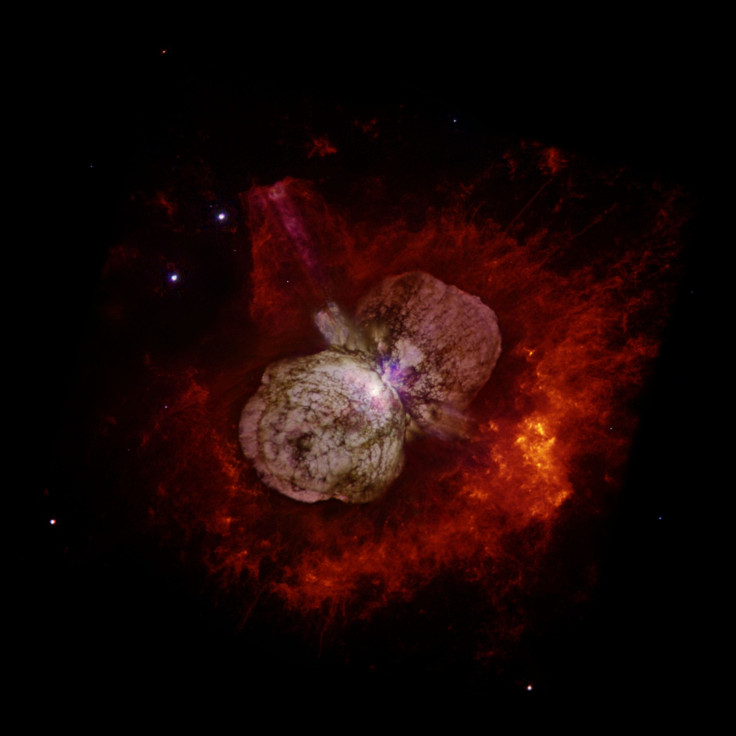Eta Carinae: Massive Star System Likely Blasting Cosmic Rays Towards Earth

Scientists at NASA have discovered that a star system located some 7,500 light years away from Earth is driving high-energy particles to the speed of light, some of which might be raining down on our planet in the form of cosmic rays.
Over the last few decades, scientists have shown particular interest in Eta Carinae — seen in the southern constellation of Carina. The system contains a pair of stars much more massive than our Sun and makes the brightest and most massive binary grouping within 10,000 light years of our planet. Back in the 19th century, it even became the brightest star in the night sky for a short period due to a powerful outburst.
In five and half years, the two stars in the system come within 230 million kilometers of each or roughly the average distance between Sun and Mars. As and when this happens, the interaction between the two stellar bodies triggers a series of processes that ultimately result in the production of cosmic rays.
“Both of Eta Carinae’s stars drive powerful outflows called stellar winds,” Michael Corcoran, a member of the team that observed the star system, said in a NASA statement. “Where these winds clash changes during the orbital cycle, which produces a periodic signal in low-energy X-rays we’ve been tracking for more than two decades.”
But, along with these low energy or "soft" X-rays, scientists at NASA also witnessed signs of gamma rays that carry much more energy. The source of this energy was in the direction of Eta Carinae, but not particularly clear.
To solve the problem, the agency decided to employ its NuSTAR space telescope that can make highly-accurate X-ray detections. The data collected from the observation, combined with low-energy X-ray findings from ESA’s XMM-Newton satellite, over a two-year-long period suggested that the stars are producing both low as well as high-energy X-rays.
The low energy X-rays, as previously suggested, was a result of the collision between hot stellar winds going up to 40 million degrees Celsius, but the "hard" X-rays had energies more than 30,000 electron volts, which is much more than what could be explained by the collision of winds.
More importantly, the high-energy X-rays varied with the orbit of the stars and even demonstrated an energy emission pattern similar to the one observed when the gamma rays were detected.
That said, linking up all the chains together, the team came to the conclusion that these high-energy X-rays and gamma rays are produced due to the acceleration of electrons close to the speed of light. According to the researchers, the collision of stellar winds produces violent shockwaves that accelerate the particles, which later interact with starlight, giving an energy boost powerful enough to produce the rays.
“We know the blast waves of exploded stars can accelerate cosmic ray particles to speeds comparable to that of light, an incredible energy boost,” Kenji Hamaguchi, the lead author of the study, said in a statement. “Similar processes must occur in other extreme environments. Our analysis indicates Eta Carinae is one of them.”
Some of these particles, as NASA described, might be escaping the system and reaching Earth in the form of cosmic rays.
It is already well established that cosmic rays with energies greater than 1 billion electron volts (eV) reach Earth from different parts of the cosmos. But, as the particles carry electric charge, the magnetic field of the solar system and Earth deflects their path, leaving no sign to detect where they came from.
The study, titled “Non-thermal X-rays from colliding wind shock acceleration in the massive binary Eta Carinae,” was published July 2 in the journal Nature Astronomy.
© Copyright IBTimes 2024. All rights reserved.





















